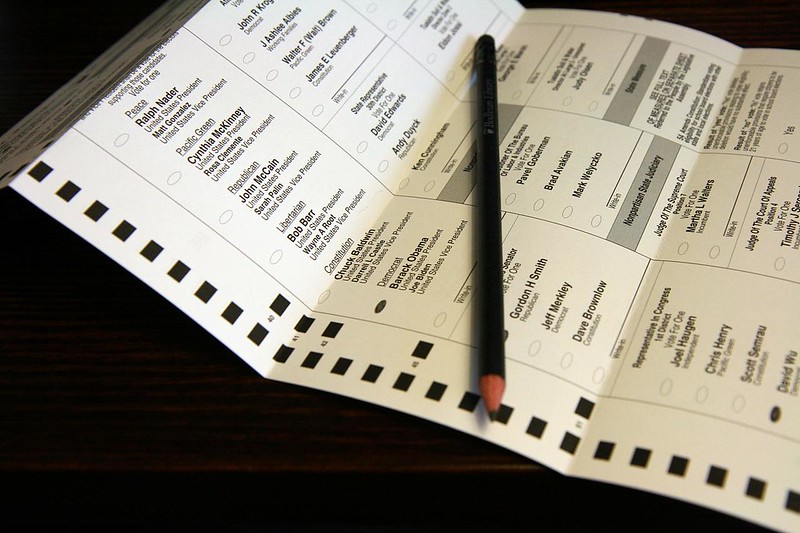Results from the 2020 election will likely be late—and that’s not a bad thing.

As more and more Americans choose not to risk the polls and opt for mail-in ballots in advance of the November elections, experts are advising that election night 2020 won’t look like it usually does. The process of counting votes will likely stretch far beyond election night, with final results taking days and possibly even weeks to emerge. Election officials are stressing that this delay is a good thing—taking a long time ensures that the count will be more accurate.
But if so many of those ballots are sent in early, why will results be delayed? Many state actually have laws that prohibit early processing of ballots. In some states, these laws are already being contested or altered specifically for the 2020 election, in anticipation of wildly increased numbers of mail-in ballots come November. Michigan Secretary of State Jocelyn Benson has been urging the legislature for months to take up bills to address this potential setback. Pennsylvania lawmakers have also been reviewing similar legislation.
But regardless, election night will likely stretch into days and weeks of uncertainty, judging by the numbers of voters who have expressed intent to vote by mail. The Washington Post recently reported that most Americans— six in 10, in fact—want to vote before Election Day, in a departure from previous years (in 2016, only four in 10 ballots were cast early).
Currently, experts tell voters to be prepared for a long wait for election results—similar to the weeks of uncertainty following the 2000 election between George W. Bush and Al Gore. And this kind of wait could drastically alter the way the results look as they come out—with 72 percent of Democrats planning to vote by mail, as opposed to just 22 percent of Republicans according to a recent poll, initial results will not be as telling as they usually are, and will make the election a lot harder to call.
In addition to early processing laws, timely counting of mail-in ballots is affected by the complexity of the vote-by-mail process—which itself poses many barriers to voter participation. For starters, the act of acquiring a mail-in ballot is not as simple as it seems. Procedures for requesting mail-in ballots, and what constitutes a valid excuse, still vary widely by state—an issue that’s received a lot of coverage since the beginning of the pandemic.
But to make things even more confusing, of course, the way in which mail-in ballots are counted differs widely from state to state as well. For instance, California allows any mail-in ballot to be counted as long as it’s postmarked by Election Day—which is why the state takes so long to produce definitive election results. But other states have stricter cutoffs: Pennsylvania only accepts ballots received by 8 p.m. local time on Election Day.

And once the ballots are received, verification systems put in place to counteract voter fraud (which, by the way, likely won’t be a huge risk despite increased vote-by-mail), make it so that mail-in ballots take longer to count than regular ballots. In most states, votes are verified by comparing the signature on the outside of the ballot envelope with the voter’s signature kept on file. But in some states, it’s not that simple.
States like Wisconsin have restrictive rules about ballot witnessing that can compromise election results, even when votes are delivered on time. Such restrictive rules resulted in 23,000 votes being thrown out during the primaries back in April, many due to missing witness signatures (as a reminder, Hillary Clinton lost Wisconsin by 22,748 votes in 2016).
Currently, Wisconsin is one of several states that require ballots to be witnessed—others include Virginia, Mississippi, Alaska, North Carolina, South Carolina, and Alabama (which requires two witnesses). In addition, several other states including Missouri and Oklahoma require ballots to be notarized (though in Oklahoma, you can get around this requirement in times of “emergency” by including a copy of your ID).
Fortunately, many of these strict witnessing requirements and other restrictions to vote by mail are being fought—but will the rulings come soon enough to make a real difference in November?
These complex conditions, combined with a compromised postal system that has warned states that all mail-in ballots may not be counted in time have created a perfect storm in an election season already rife with voter suppression.
Fortunately, there are other ways to turn in your mail-in ballot. Many states allow voters to drop off their mail-in ballots at polling places or election offices on election day, have drop boxes for mail-in ballots at central locations, or allow someone else to return your mail-in ballot for you. However, these options also differ state-by-state—so voters are encouraged to research what is and isn’t allowed in their state well in advance of Election Day.
Regardless of any changes made to the vote-by-mail system in the six weeks, it is guaranteed that this year’s election results will take longer than usual to emerge—and it is likely that more unexpected issues will emerge. Experts urge voters to be proactive about their voting plans to ensure that their voices are heard.
Make sure your voice is heard this November! You can find out deadlines for vote by mail in your state here, and make sure you’re registered to vote here.
You may also like:





